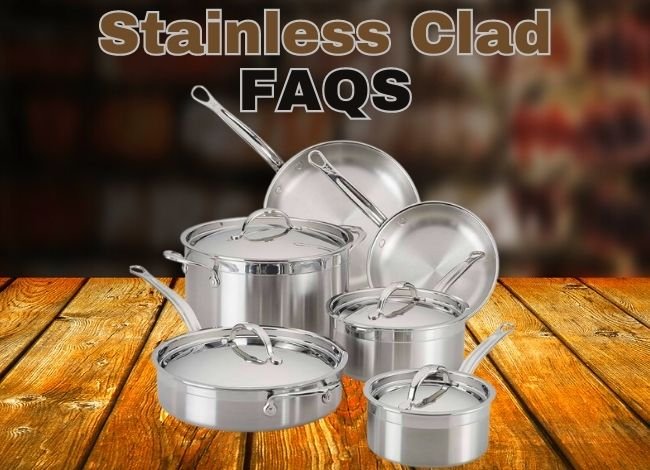Last Updated on January 22, 2024
Stainless clad cookware is a popular choice among home cooks and professional chefs alike, thanks to its durability, even heat distribution, and versatility. If you’re considering investing in stainless clad cookware, you might have some questions about its features and benefits. In this article, we’ll answer the most common stainless clad questions to help you make an informed decision.
-
What is stainless clad cookware?
Stainless clad cookware refers to cookware that has multiple layers, with a core of aluminum or copper sandwiched between layers of stainless steel. This cladding process combines the best features of each material: the heat conductivity of aluminum or copper and the durability and non-reactivity of stainless steel.
-
What are the benefits of using stainless clad cookware?
Some advantages of using stainless clad cookware include:
- Even heat distribution: The aluminum or copper core ensures that heat spreads evenly across the cookware, preventing hot spots and allowing for precise temperature control.
- Durability: Stainless steel is resistant to rust, staining, and corrosion, making it a long-lasting option for your kitchen.
- Non-reactive: Stainless steel doesn’t react with acidic or alkaline foods, preserving the taste and quality of your dishes.
- Low maintenance: Stainless clad cookware is dishwasher safe and easy to clean.
- Versatility: Stainless clad cookware is suitable for various cooking techniques, including frying, sautéing, boiling, and simmering.
-
Is stainless clad cookware induction compatible?
Yes, most stainless clad cookware is induction compatible. The outer layer of stainless steel allows the cookware to work on induction cooktops. However, checking the manufacturer’s specifications before purchasing is essential to ensure compatibility with your cooktop.
-
How do I clean and maintain stainless clad cookware?
To clean stainless clad cookware, follow these steps:
- Allow the cookware to cool down before cleaning.
- Soak the cookware in warm, soapy water to loosen any food residue.
- Use a non-abrasive sponge or cloth to clean the surface gently.
- Rinse the cookware thoroughly with warm water.
- Dry the cookware immediately with a soft cloth to prevent water spots.
You can use a gentle stainless steel cleaner or a paste made from baking soda and water for stubborn stains or discoloration.
-
Are there any downsides to stainless clad cookware?
One potential downside to stainless clad cookware is its price. High-quality stainless clad cookware can be expensive due to the combination of materials and manufacturing processes. However, the long-lasting durability and performance of stainless clad cookware often justify the investment.
Conclusion
Stainless-clad cookware offers numerous benefits, including heat distribution, durability, and versatility, making it a popular choice among professional chefs and home cooks. By understanding the features and benefits of stainless clad cookware, you can make an informed decision and invest in cookware that suits your specific needs and preferences.
Related Article:
- In-Depth Product Review: Williams-Sonoma vs. All-Clad
- Stainless steel vs. nonstick cookware: Which should you get?
- Heritage Steel pans vs. All-Clad (Which Cookware Is Better?)
- Viking vs Calphalon: Who Wins in the Cookware Wars




